Succesful Installation at Nowra Presbyterian
18 Mar 2017
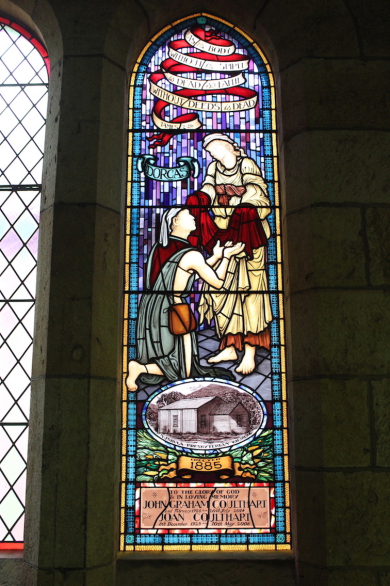 New window "Dorcas and the Pauper"
New window "Dorcas and the Pauper"
After several months of intense work my new window illustrating Dorcas in a gesture of giving cloth to a pauper was installed into one of the last remaining openings at St Andrew's Presbyterian Church in Nowra, southern NSW. The window fitted quite well and installation proceeded relatively smoothly, with only a slight adjustment in the height required onsite.
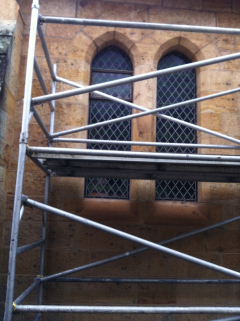 External scaffolding with existing windows
External scaffolding with existing windows
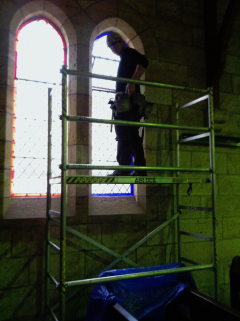 Pete Whittaker onboard the internal scaffolding
Pete Whittaker onboard the internal scaffolding
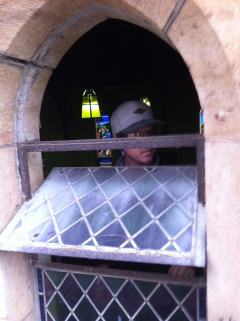 Top arch removed, steel vent going
Top arch removed, steel vent going
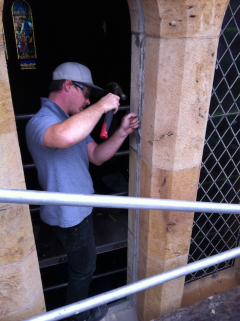 Pete cleaning out stone chanel
Pete cleaning out stone chanel
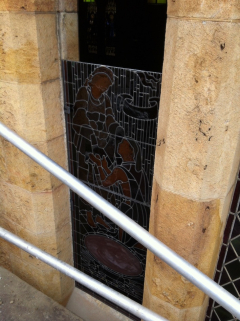 New panels stacked in position
New panels stacked in position
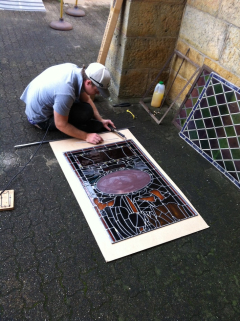 Adjustment to overall height
Adjustment to overall height
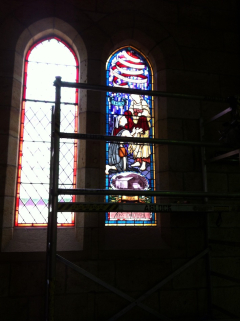 New window installed
New window installed
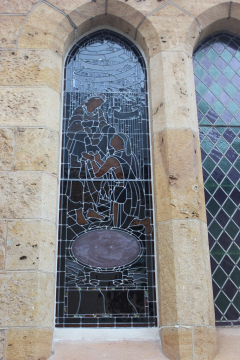 Outside shot of the new window
Outside shot of the new window
The subject matter of Dorcas was a request from the donors, in consultation with Rev Fred Monckton, Parish Priest, as best representing the generous and giving nature of John and Joan Coulthart whom the window is in memory of. There was also a requirement to portray the old Presbyterian Church of Numbaa, which stood on the Coulthart's property some 20kms to the East of Nowra. A lot of research went into the design of the window, as is often the case. It was over a year ago that I drove down to Nowra to meet with the four Coulthart sisters and visit the Numbaa property. The old corrugated iron shed with its cast iron pillars still stands but the weatherboard and shingle porch has long since gone and the windows to the shed have been sheeted over. The building was erected as a Church in 1885.
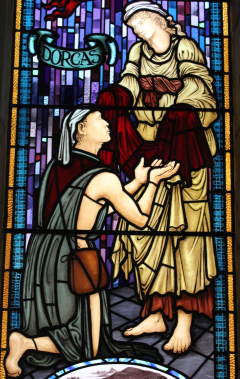 Detail of central figures
Detail of central figures
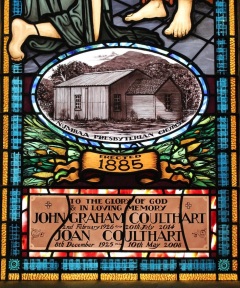 Detail of lower portion
Detail of lower portion
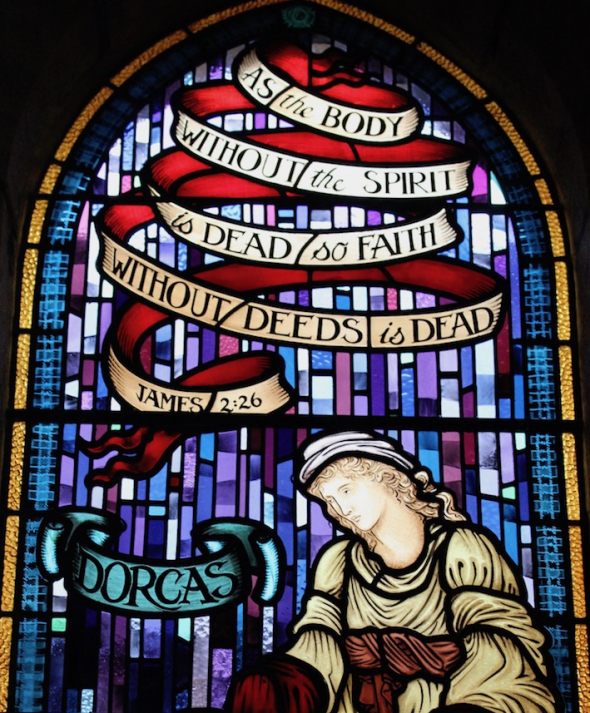 Detail of top portion of window
Detail of top portion of window
I wanted my figure of Dorcas to be beautiful and compassionate and decided to attempt a recreation of an angel by William Morris and Edward Burne-Jones', changing the colours a little, without the wings and giving her a headscarf instead of flowers. As was common for the studio, more than one window was created from this same design. My figure of the pauper is based on a frescoe showing St Cecilia by Renaissance painter Lorenzo Costa. It seemed particularly appropriate as St Cecilia is shown divesting herself of all her possessions.
Filed under: stained glass, jeffrey hamilton, nowra, presbyterian, church window, dorcas | View Comments
Work in Progress -but taking a break!
27 Dec 2016
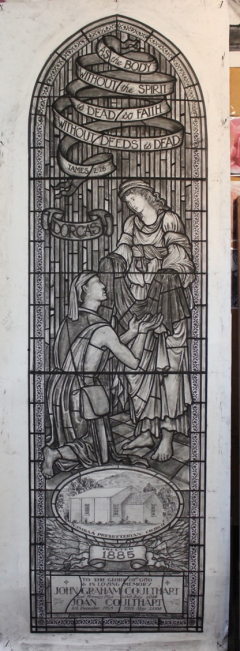 Dorcas
Dorcas
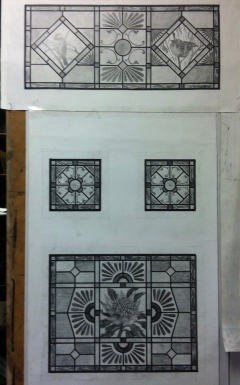 Balmain residence
Balmain residence
Having completed a rather exhaustive program of installations in the last few months of 2016 I am taking a break for two weeks, with the studio closed until Monday January 9th. We have already begun work on the new jobs however: shown above are the full-size charcoal cartoons for a private residence in Balmain and a memorial window for Nowra Presbyterian Church.
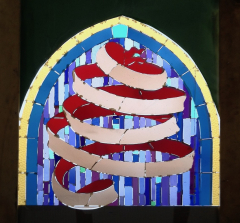 Glass cut and waxed
Glass cut and waxed
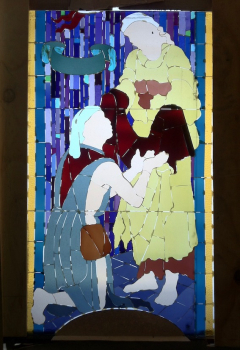 Glass cut and waxed
Glass cut and waxed
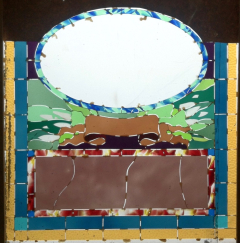 Glass cut and waxed
Glass cut and waxed
All of the glass for Nowra has been cut and waxed onto plates ready for painting. Most of the glass for the Balmain residence has also been cut and some of it already painted, with one small section built (below)
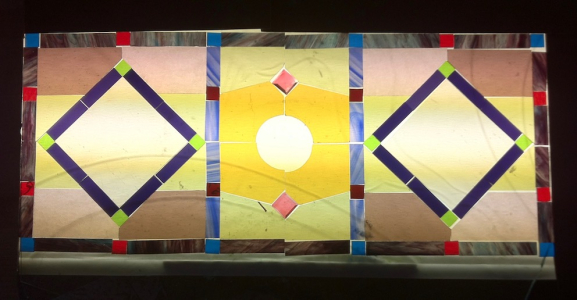 Fanlight mostly cut
Fanlight mostly cut
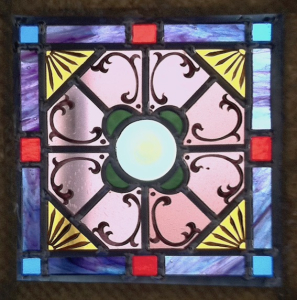 Small door panel built
Small door panel built
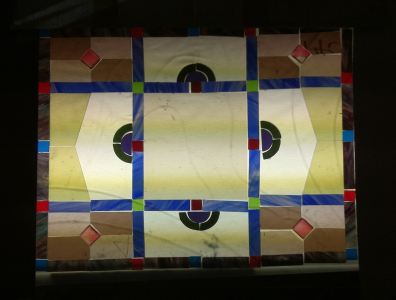 Door panel mostly cut
Door panel mostly cut
Thank you for visiting my website and reading my blog. I wish you peace and good cheer for the holiday season, wherever you might be in the world. See you with renewed energy later in 2017: HAPPY NEW YEAR!
Filed under: stained glass, jeffrey hamilton, nowra presbyterian church | View Comments
Jeff Manning at the Shop Gallery, Glebe
14 Apr 2016
Two exhibitions of interest currently showing in Glebe Point Road: firstly "Recent Paintings" by Jeff Manning at the The Shop Gallery.
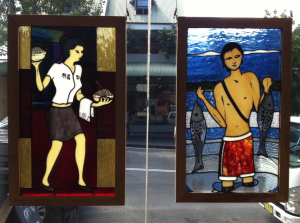 Two panels by Jeff Manning & Greville Wilton
Two panels by Jeff Manning & Greville Wilton
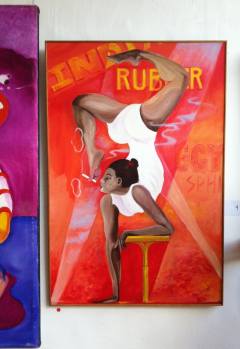 Smoking Acrobat
Smoking Acrobat
Jeff Manning is an accomplished painter, working primarily in the magical realist style. He has collaborated with well known leadlighter Greville Wilton on several occasions to produce stained glass windows for local Churches in the New England region and in this instance the two have produced a charming suite of stained glass panels illustrating acrobats, dancers and other figures from Jeff's oeuvre.
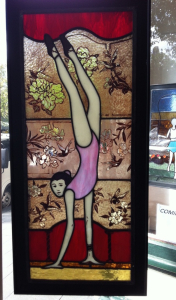 Pink Acrobat
Pink Acrobat
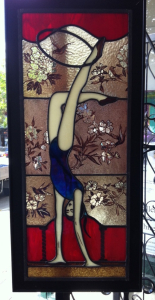 Blue Acrobat
Blue Acrobat
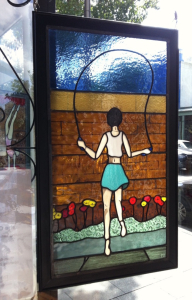 Skipping
Skipping
Manning has learned much from his association with Wilton and their experience with Church stained glass work, clearly evident in the painted decoration deployed in these quirky glass panels. I particularly enjoyed the exploration of 19th Century floral backgrounds: these locate the contemporary, stylised figures within a traditional stained glass canon creating an interesting juxtaposition. Whereas the fisherman and the waitress are to my eye not as successful, harking more toward the naive style of 1970's leadlight revival which occurred throughout the USA. Merely my opinion, of course. The small detail of a bowl of spaghetti in "The Waitress" however is brilliant.
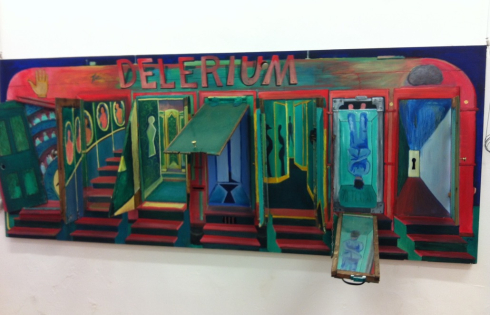 Delerium by Jaff Manning
Delerium by Jaff Manning
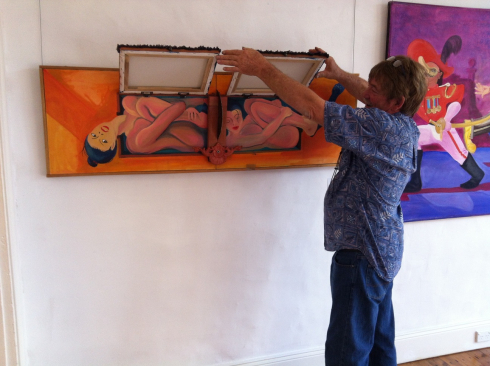 Greville reveals secrets of the painting
Greville reveals secrets of the painting
Filed under: stained glass, greville wilton, glebe, glenn innes, jeff manning, australian artist, shopfront gallery | View Comments
Anzac Village Chapel Installation
22 Apr 2015
About 12 months ago I removed all the stained glass windows originally installed into old Chapel of the Anzac Village, Collaroy Plateau, by Philip Handel. My task was to come up with a design scheme which would be suitable for the new Chapel, satisfying the requirements of the architects, Humel Architects of Dee Why, while paying respect to the original artwork by Handel.
I knew at the start it would be a difficult job, and it has proven to be so. But with 6x of the 12 panels installed, people seem happy with the result thus far. In fact the new leadlight material surrounding Handel's pieces gives them a new life.
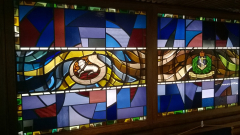 Re-setting of Handel windows
Re-setting of Handel windows
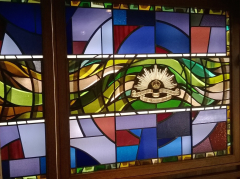 Australian Commonwealth Military Forces
Australian Commonwealth Military Forces
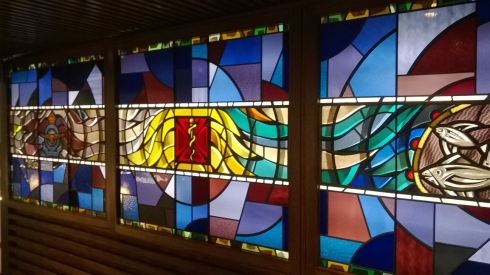 Panels 4, 5 and 6
Panels 4, 5 and 6
These six panels are installed as highlights either side of the entry corridor. They are photographed here while standing in the scaffold tower. The following snapshots give you some idea of the installation process.
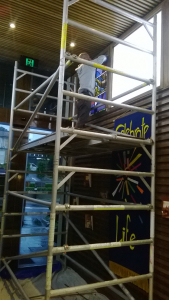 Pedro on the scaffold
Pedro on the scaffold
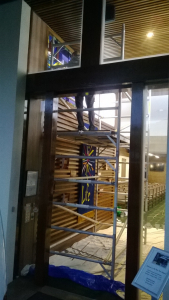 Viewed from outside
Viewed from outside
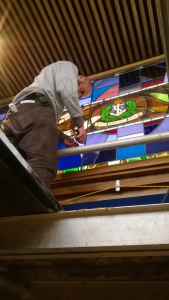 Tying rods in place
Tying rods in place
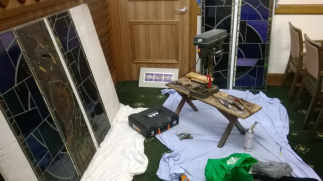 My work station onsite
My work station onsite
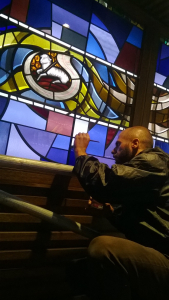 Painting copper ties
Painting copper ties
I am still working on the remaining six panels, to be installed early in May. One of these six is actually an entirely new panel to make up the set and provide a symmetrical format for the back wall of the Chapel. The RSL has commissioned me to produce a window based on the image used in their website Soldier On: an interesting challenge!
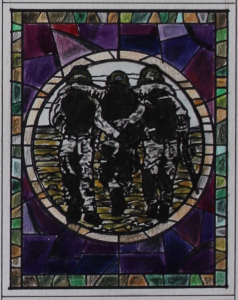 Design sketch for Soldier On
Design sketch for Soldier On
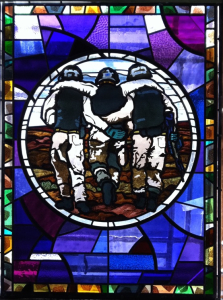 Completed window
Completed window
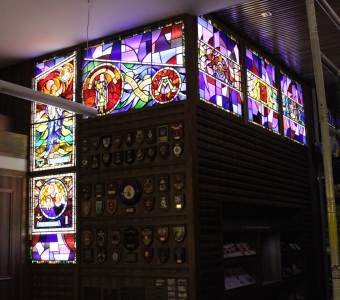 Left hand side installed
Left hand side installed
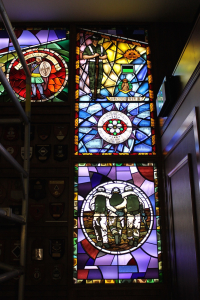 Right hand side
Right hand side
Filed under: stained glass, jeffrey hamilton, restoration, restorations, philip handel, war memorial, collaroy plateau, anzac village | View Comments
Camp Creative 2015
01 Feb 2015
On Thursday 8th January I loaded up the station wagon with glass, lead and tools from Australian Stained Glass Supplies in Leichhardt and headed North the next day toward Bellingen. I was booked to teach a group of 7x students the basic craft of leadlighting, aiming to instill a passion for stained glass; by the end of 5x days solid work I think I achieved that aim. Everyone enjoyed themselves and seemed to be pleasantly surprised by what they made during the week.
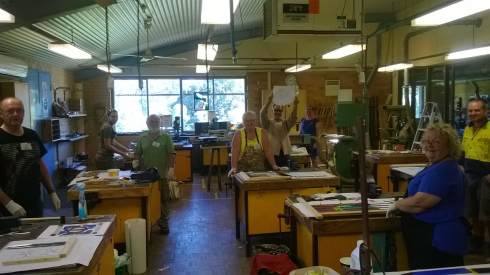 Our Classroom (Morning of Day Four)
Our Classroom (Morning of Day Four)
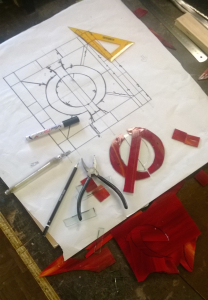 Cutting underway
Cutting underway
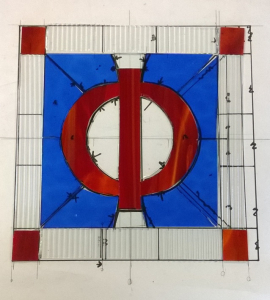 Glass all cut
Glass all cut
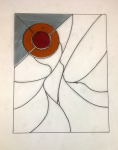 Cutting underway
Cutting underway
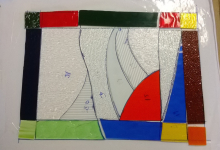 Glass all cut & laid out
Glass all cut & laid out
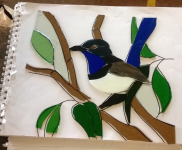 Cutting in progress
Cutting in progress
 Finalising design
Finalising design
 Leading up
Leading up
 Leading up
Leading up
 Soldering
Soldering
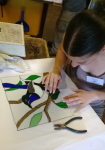 Checking for accuracy
Checking for accuracy
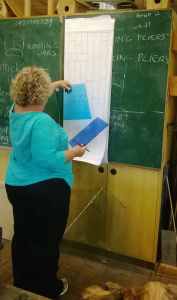 Selecting glass
Selecting glass
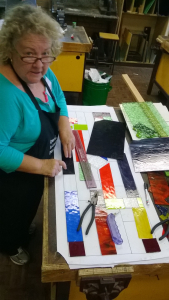 Cutting in progress
Cutting in progress
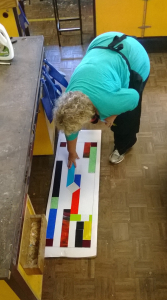 Laying out the glass
Laying out the glass
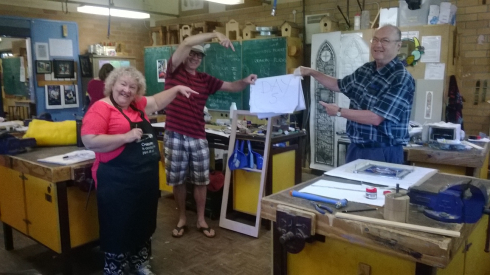 Morning of the Final Day
Morning of the Final Day
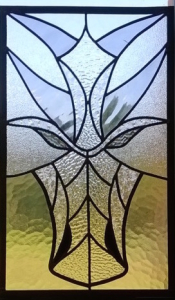 Completed work
Completed work
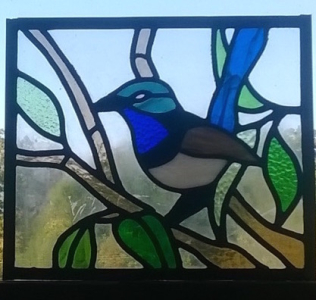 Completed work
Completed work
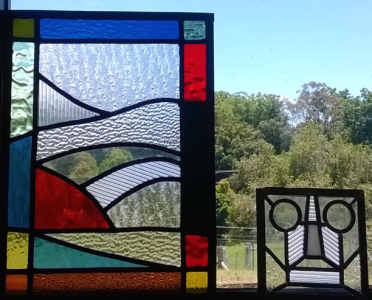 Completed work
Completed work
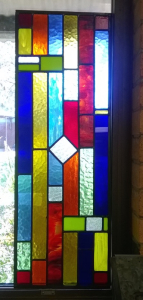 Completed work
Completed work
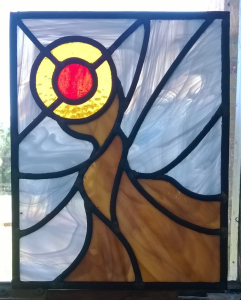 Completed work
Completed work
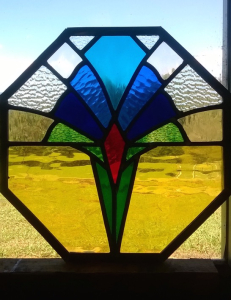 Completed work
Completed work
Camp Creative is held in Bellingen every year, with the whole town getting behind it. Around 1,000 students participate in everything from Chinese Calligraphy through Saxaphone and Drumming to making a fountain out of bamboo cut from the surrounding bush. Many students come back year after year, taking on different skills each time or pushing their previous course to new heights.
Filed under: stained glass, leadlight, jeffrey hamilton, australia, bellingen, new south wales, adult education | View Comments
A Tour of the Studio
06 Sep 2014
Last Saturday Diana Giese hosted a tour of stained glass in Sydney through Mosman Community College. The group looked at the beautiful windows of St John's Anglican Church in Paddington and St Benedict's Catholic Church at Broadway before heading to the Fish Markets for lunch. Then it was on to my place to view a stained glass practitioner in his studio and learn about the processes involved in making a window.
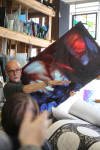 Mixed colour mouthblown sheet
Mixed colour mouthblown sheet
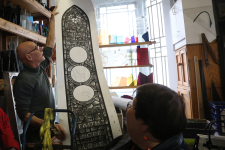 Discussing the design process
Discussing the design process
 Mixed colour mouthblown sheet
Mixed colour mouthblown sheet
Karla Whitmore, who took the photo above, far right, was the stained glass historian accompanying the tour. She explained to the group some of the intricacies of the windows they were viewing. The other photos in this collection are by Daphne and Dom Gonzalves, the regular 'archivists' of the group. Diana leads 4x tours per year, each one focusing on a different aspect of Sydney.
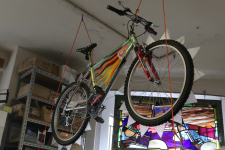 A Glass Artist's bicycle
A Glass Artist's bicycle
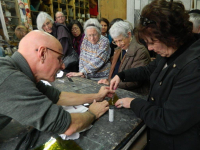 Teaching cutting of glass
Teaching cutting of glass
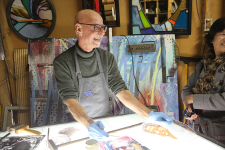 Demonstrating glass painting
Demonstrating glass painting
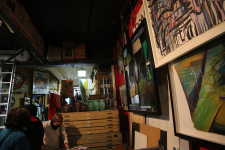 A view of the studio
A view of the studio
By all accounts the group of 30x people enjoyed themselves immensely. It was a bit of a squeeze but after tidying up the place all through the previous week I managed to accommodate everyone, explaining all the various processess involved, starting with the making of art glass. Although I was quite exhausted afterward, it was a privilege and a pleasure to show the group around.
Karla Whitmore is a very knowledgable stained glass historian with several articles published on Ray Brown's website Stained Glass Australia.
The lively Diana Giese is an accomplished publisher and historian, with a collection held in the National Library of Australia. The group were just as fascinated by the building itself, with some venturing up onto the roof to view the graffiti gallery there, although the weather wasn't so great.
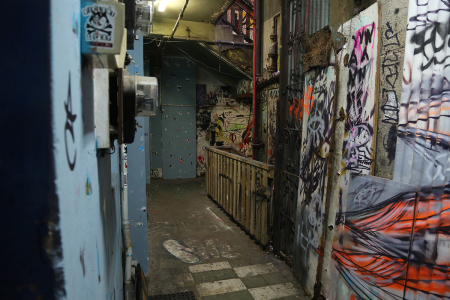 Approach to my studio in Hibernian House
Approach to my studio in Hibernian House
Filed under: stained glass, jeffrey hamilton, surry hills, mosman community college, karla whitmore, diana giese | View Comments
Stained Glass & Leadlight @ Camp Creative
22 Jan 2014
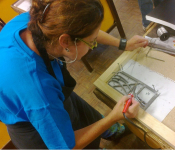 Day 1: soldering the test panel
Day 1: soldering the test panel
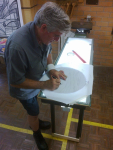 Tracing the cartoon
Tracing the cartoon
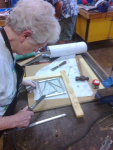 Soldering the test panel
Soldering the test panel
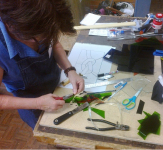 Learning to cut glass
Learning to cut glass
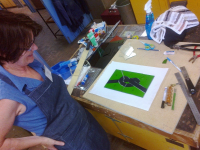 Design cut, ready to lead
Design cut, ready to lead
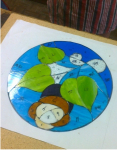 Day2: advanced student
Day2: advanced student
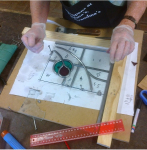 Learning to lead-up
Learning to lead-up
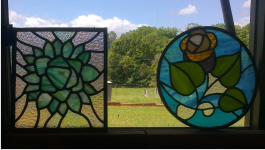 Day 3: two finished works
Day 3: two finished works
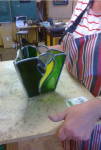 Day 4: a leaded 3D object
Day 4: a leaded 3D object
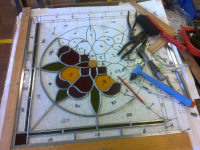 Ambitious project underway
Ambitious project underway
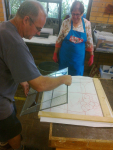 Correct handling procedure
Correct handling procedure
Filed under: stained glass, leadlight, jeffrey hamilton, bellingen, tuition, nsw | View Comments
The Centaur Window
06 Dec 2013
The Centaur was an Australian hospital ship sunk by the Japanese off the coast of Queensland during WW2. A tragic event. But the window commemorating the lives lost is beautiful. It is located in the front entry foyer of Concord Hospital in Sydney NSW.
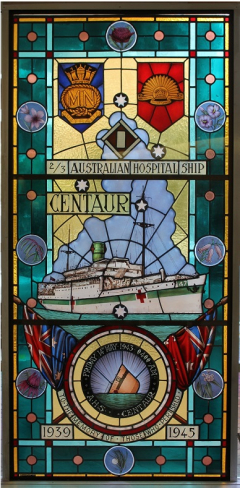 The Centaur Window
The Centaur Window
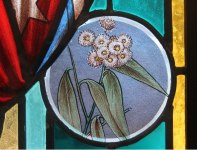 Gum blossom
Gum blossom
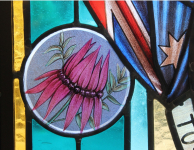 Sturt's desert pea
Sturt's desert pea
I'v been writing up an Assessment Report for the stained glass of St Mary's Catholic Church Concord and needed to visit the Church once more. It happened that my good friend Bronwyn Hughes, a stained glass historian from Melbourne, was visiting Sydney and expressed a desire to see the St Mary's windows on her way to visit the Centaur window. And so it came to pass... I became tour guide for Bronwyn and was able to shoe her not only the Centaur window but also the Armed Forces Memorial windows in the Concord Hospital Chapel: a bonus, since Bronwyn's current research subject is War Memorial stained glass windows.
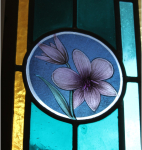
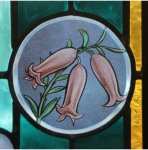
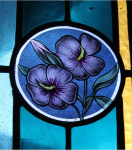 Native hibiscus
Native hibiscus
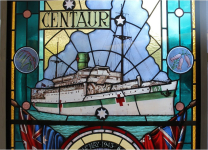 Close-up of the ship
Close-up of the ship
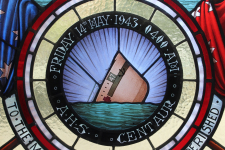 The ship goes down
The ship goes down
This window is not only beautifully designed but exceptionally well painted. Its certainly a very traditional window for Martin van der Toorn, who sometimes works quite loosely, but its a fine piece of work and a fitting tribute to a horrific event.
Later I showed Bronwyn around Hibernian House, as she is also quite interested in public art and 'street art', of which there are some excellent examples on the roof of my building. All in all a great day
Filed under: stained glass, concord hospital, martin van der toorn, ww2, hospital ship | View Comments
New Leadlight Class at Rozelle
06 Jun 2013
Well not actually a new class but a new one for me: I've taken over from the previous tutor who had to disappear overseas at short notice. And it's going really well! We've just finished the 4th week and I'm thrilled with the student's progress. All 5x are beginners (though one chap has some experience with foil work) and they are taking to the craft with enthusiasm and dedication. I get home very tired of a Monday night but I do enjoy the teaching process.
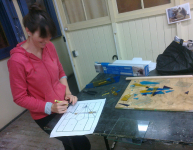 Week 3
Week 3
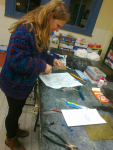 Week 3
Week 3
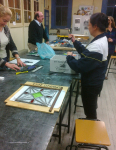 Week 3
Week 3
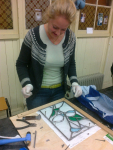 Week 4
Week 4
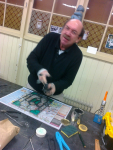 Week 4
Week 4
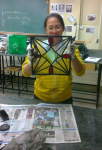 Week 4
Week 4
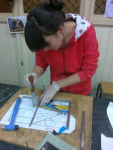 Week 4
Week 4
Each of the students have been able to spend time on their projects at home, which really helps with their progress. And being a small class I'm able to spend quite a bit of time with each person. As well as their individual projects I bring in items for discussion each week such as the Maroubra Anglican Church commission currently underway and magazines like Stained Glass Quarterly for them to borrow.
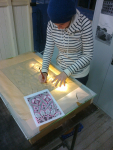 Wk 6: designing new project
Wk 6: designing new project
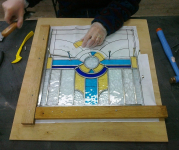 Wk 6: tidy work
Wk 6: tidy work
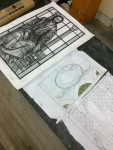 Wk 6: discussing a stained glass commission
Wk 6: discussing a stained glass commission
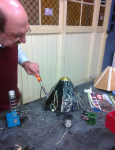 Wk7: building a lampshade
Wk7: building a lampshade
We have one more week to go, then a two week break. Another 8x week Session begins 22nd July. Several of the current students will be re-enrolling to tackle more advanced work but there is plenty of space if you are considering learning the craft. Enrolments can be done online and all relevant information is available on the Sydney Community College website
Filed under: stained glass, leadlight, jeffrey hamilton, sydney community college, beginners, beginner | View Comments
Since Thursday October 13th I've been working onsite at St James Catholic Church in Woolley St, Forest Lodge, cleaning and restoring the three large stained glass windows behind the altar. Each set of windows is made up of three individual lancets, so nine windows in all, installed sometime around 1880.
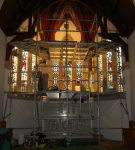 Scaffolding over altar
Scaffolding over altar
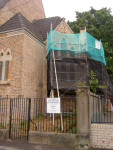 External scaffold around the apse
External scaffold around the apse
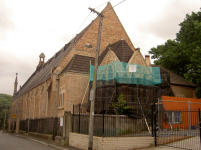 Rear of St James from the laneway
Rear of St James from the laneway
The job entailed firstly removing the wire guards to gain access to the windows and then completely removing all the old overglazing. This was in a terrible state, badly cracked and scoured and in fact should never have been installed in such a manner in the first place. When these windows were rebuilt some 40 or so years ago, the installers glazed a layer of protective glass hard up against the stained glass at the same time and in the same rebate. Consequently over the years huge deposits of debris had collected in the tiny space between the leaded glass and the overglazing, obscuring much of the beauty of the windows from the inside.
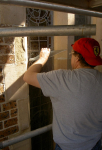 Removing overglazing
Removing overglazing
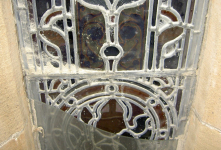 Trapped silt and overglazing
Trapped silt and overglazing
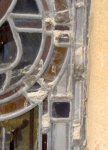 External build up of silt
External build up of silt
Assisting me on the job are Clive Hillier (seen above) and Chris Wellwoood. Chris used to run Aurora Stained Glass at Narellan for many years. He currently runs a Life Drawing class for Liverpool Art Society. Clive operates Clive Hillier Stained and Art Glass at Mascot. He also teaches leadlighting for Australian Stained Glass Supplies at Leichhardt, so the windows are in very good hands. The three of us are taking great care with the windows, spending long hours painstakingly cleaning each pane of glass both inside and out. There are also many small repairs to be done and just one panel requiring reconstruction. The last task will be to re-cement all the windows firmly into their stone rebates and re-hang the wire guards.
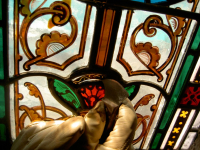 Scraping away sludge
Scraping away sludge
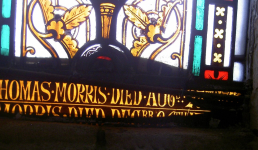 Obscured and damaged inscription panel
Obscured and damaged inscription panel
Restoration is a little like forensics or archeology and a good knowledge of many different studio practices is extremely useful in determining just what it is we are looking at. Painted stained glass windows tend to acquire an organic based scum which builds up on the actual glass paint over the years. But in addition to this scum and accumulated cement render and house paint these windows were also covered in patches of black sludge.
In the making of a leadlight the final stage is to putty the gap between the glass and the lead with a glazing compound making them waterproof and binding the whole fabric together. Many studios use a slurry method to achieve this but effective clean-up is crucial with such a method and often this doesn't happen. Such was the case with the St James windows. When they were rebuilt sometime in the 1970's whoever applied the slurry left large clumps of the stuff adhered to the glass. A careful reading of the fired glass paint is required here to distinguish between sludge and the painted decoration hidden beneath. Fortunately the paint itself is quite strongly adhered to the glass (not always the case).
An advantage of having been rebuilt relatively recently is that the lead fabric is quite sound so these windows should provide many more years of good service and the congregation will be able to appreciate their beauty anew once the scaffold comes down in a couple of weeks time.
Filed under: windows, window, stained glass, restoration, restorations, cleaning, cleanings | View Comments
Subscribe
The Latest Happenings in my World
This blog is where you will find my latest news. It can range from posting images of progress of the current commission to art crit to political or social commentary, both national and international. Anything, basically, that's commanding my attention and I feel is worth sharing with you, my reader. Enjoy. My previous blog can be found at jeffreyhamilton.blogspot.com
